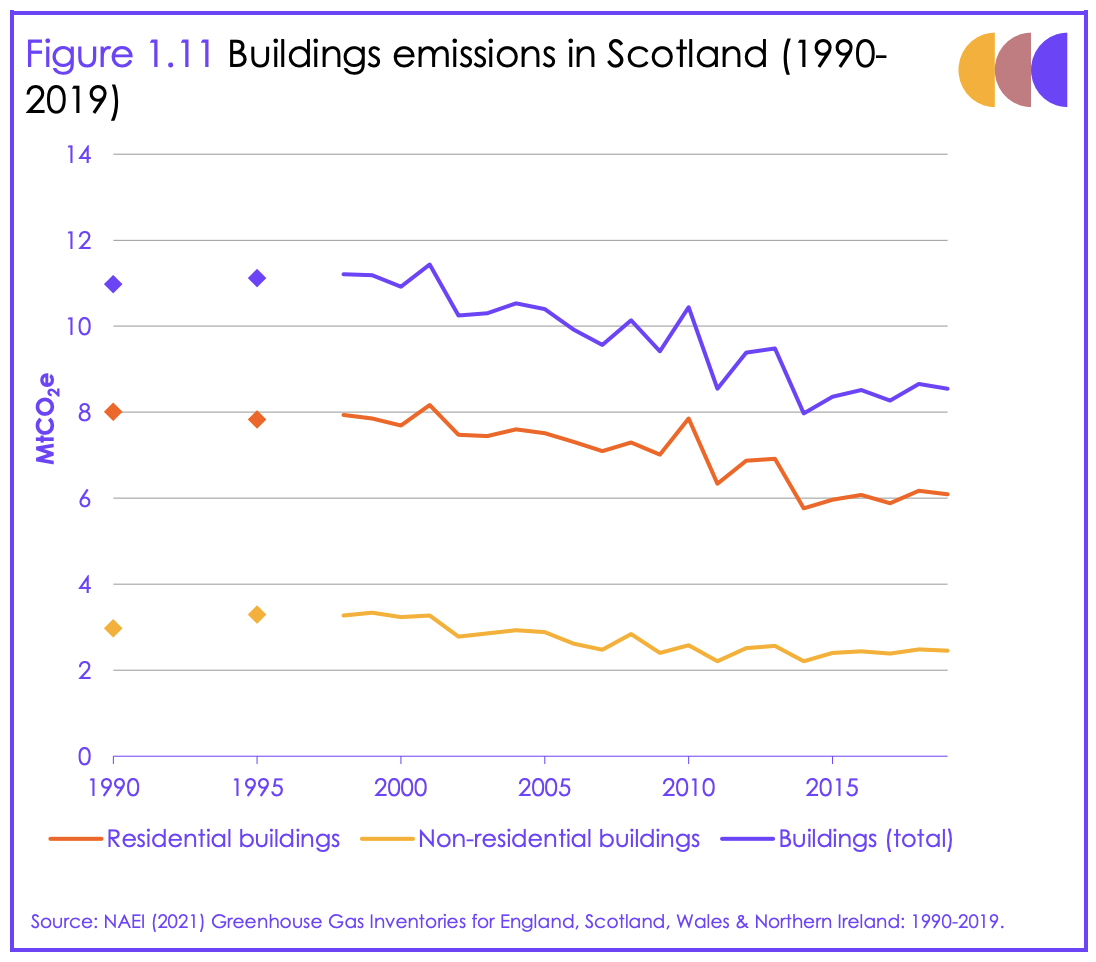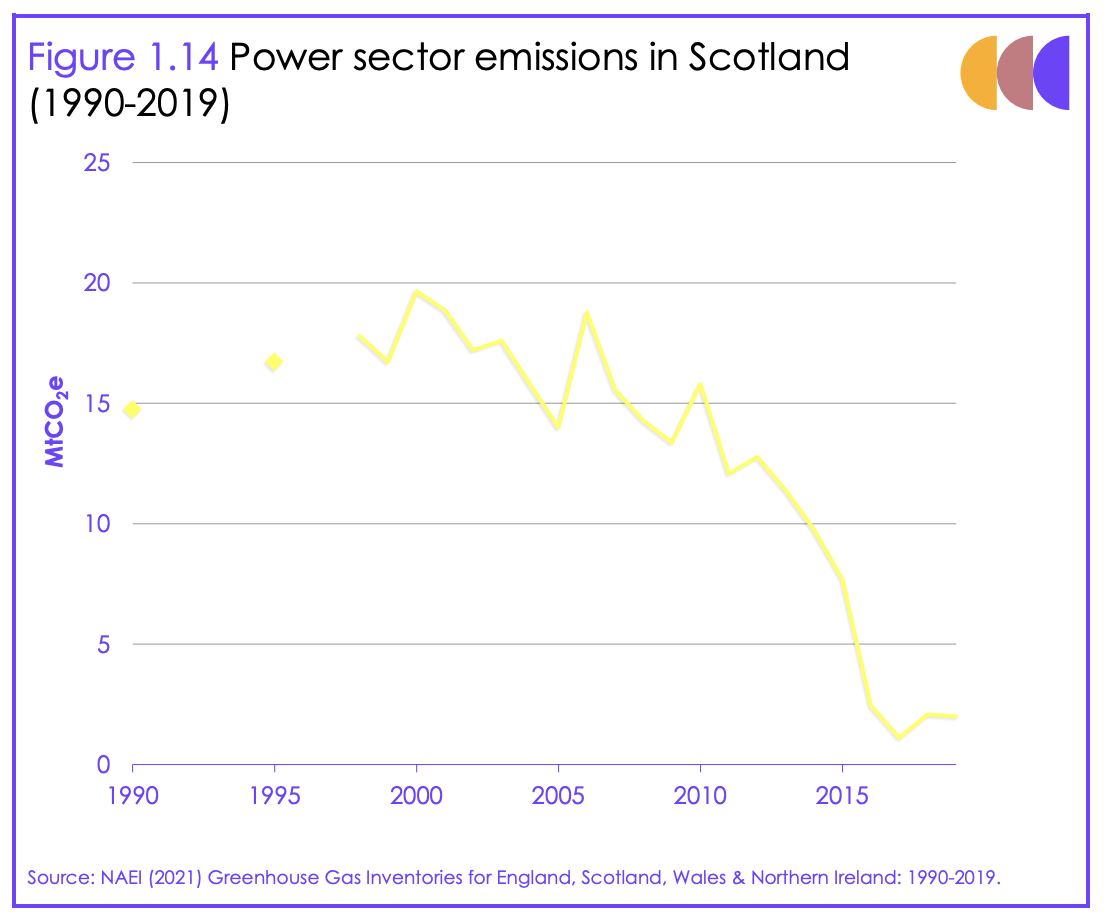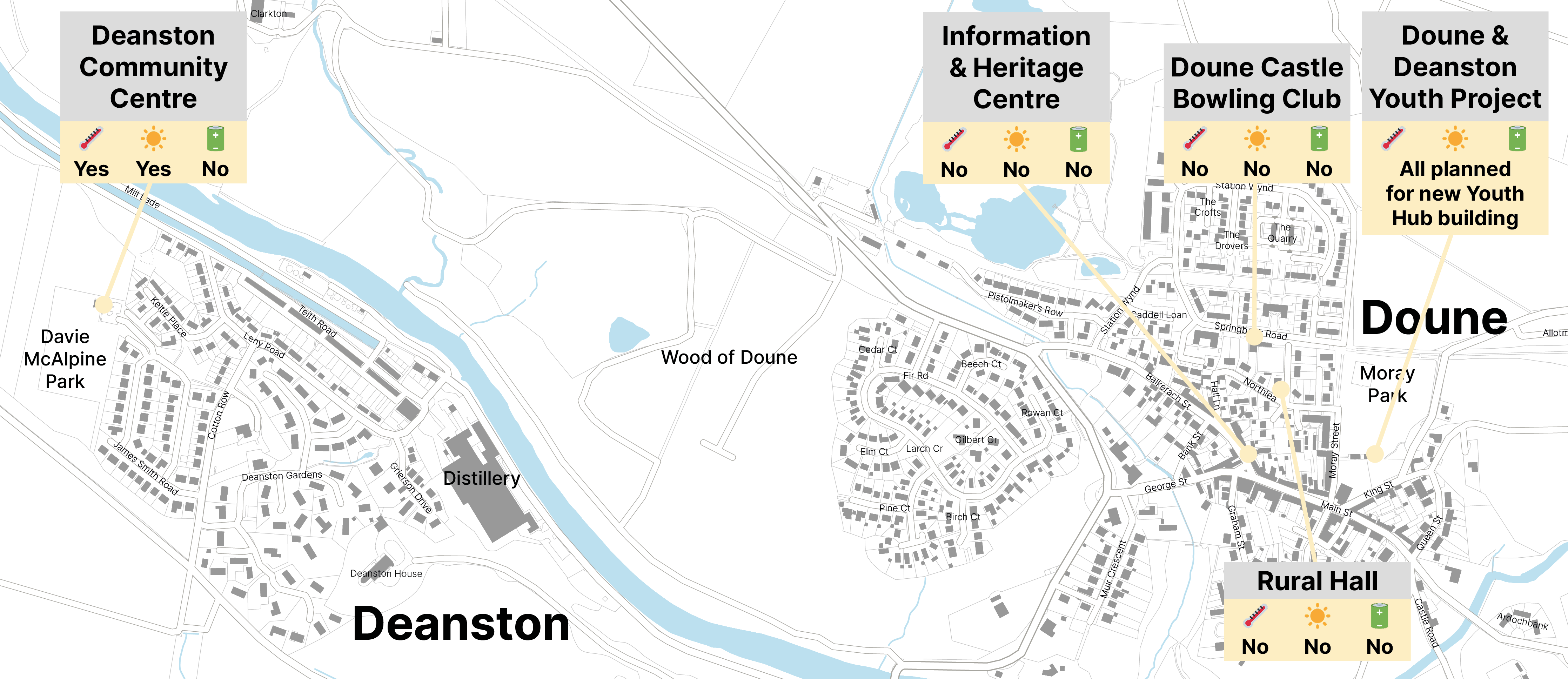Kilmadock
Community
Plan
Doune
Deanston
Buchany
Argaty
Workshops:
Following on from the initial community views surveys, the next step in creating a plan are workshop events looking at some of the big challenges for the community in the next decade.
On this page, you’ll find the main content on this topic presented at the workshops. Each topic had feedback activities, the feedback form is now closed.
Energy
For at least a hundred years most of the energy we have used has largely been dependent on fossil fuels. This is changing.
The Scottish Parliament has set targets to reduce Scotland’s greenhouse gas emissions from a 1990 baseline:
- 75% reduction by 2030
- 90% reduction by 2040
- net-zero by 2045
What does net zero mean?
‘Net Zero’ means the amount of greenhouse gas emissions we put into the atmosphere and the amount we’re able to take out will add up to zero.
The first step is to reduce emissions by changing our actions and processes, but not all emissions can be avoided. To get to net zero any emissions we create would be balanced by schemes that offset the same amount of greenhouse gases entering the atmosphere, for example by planting trees, restoring peatland or using technology like carbon capture and storage.
What this means at a community level
A lot of things we have grown used to will need to change in the next decade.
Energy isn’t the only part of achieving ‘net-zero’, but it does play a large part. In this topic we’re looking at what can be done at a local level for building energy and renewable electricity.
As context for these issues:
- In 2019, direct emissions from heating buildings represented 18% of total Scottish greenhouse gas emissions.
- The emissions impact of power generation in Scotland has reduced by 86% between 1990 and 2019.
- However, demand for electricity will increase as energy sources (e.g. vehicles or home heating) are decarbonised.


Heating at Home
Context
In the 2011 census, this is how homes were heated in the Kilmadock parish area, compared to Stirling district and Scotland as a whole.
| Heating type (2011 Census) | Kilmadock | Stirling District | Scotland |
| Electric central heating | 15% | 12% | 13% |
| No central heating | 2% | 1% | 2% |
| Gas central heating | 56% | 74% | 74% |
| Oil central heating | 16% | 7% | 6% |
| Solid fuel central heating | 5% | 1% | 1% |
| Other | 2% | 1% | 1% |
| Two or more types of heating | 4% | 3% | 3% |
The increase in the number of homes locally since 2011 (and in turn the number with gas central heating) will increase these figures by a greater margin than any conversions to electricity or heat pumps.
The census data shows the scale of the challenge. Most homes will have to change how they are heated in the next 10–20 years to meet modern standards.
The current plans suggest new fossil fuel boilers are to be phased out by 2025 in non gas grid areas, and 2030 in areas that are connected to the gas grid.
How can home heating be decarbonised?
There are two main steps to this:
Efficiency
How can insulation and draught proofing help heat your home using the least amount of energy possible.
Energy source
Changing to an energy source that doesn’t directly use fossil fuels (e.g. heat pump, or mains electricity).
In terms of delivering this on the ground, broadly there are three approaches:
- As an individual household.
- With immediate neighbours.
- At a larger scale on a district level (e.g. more than your immediate neighbours).
The potential for the 2nd and 3rd depend not only on personal buy-in but the technical feasibility and commonality between the different construction of homes; an 19th century building has different energy demands to a 1970s building.
It’s clear that this change can’t be done alone. People are going to need support.
Feedback activity
What do you think about these changes?
Ideas you have, or help you need.
Community Buildings
It’s not just heating at home, the energy of non-domestic buildings will need to be decarbonised too. This includes the community-owned buildings locally.
Each building will have its own requirements, but generally (beyond efficiency) there are three aspects:
1. 🌡️ Renewable heat source (heat pump or electricity)
2. ☀️ Solar electricity generation
3. 🔋 Battery storage
Looking at the existing community-owned buildings locally, there is a mixed picture.

Feedback activity
Would you like to see the energy needs of community buildings decarbonised?
Renewable Energy
Setting aside any solar panel installations, there are three main generators of renewable electricity locally:
Braes of Doune wind farm, opened 2007
36 wind turbines with a total capacity of 72MW
Deanston hydro scheme, first installed in 1940s but modernised since
Two turbines fed from the Mill Lade with a total capacity of 400kW
Annat Burn hydro scheme, opened 2015
Capacity of 500kW
Feedback activity
Ideas of how and where more renewable electricity could be generated locally
Links to other topics
Community Action
Development
Energy
Future Deanston
Parking in Doune
Public Transport
Roads
Walking & Cycling
Workshops Homepage
Acknowledgements
On behalf of the community and in partnership with Kilmadock Community Council, Kilmadock Development Trust is guiding the process to create the plan. A number of other organisations are supporting the Community Plan development, for more information click here.

